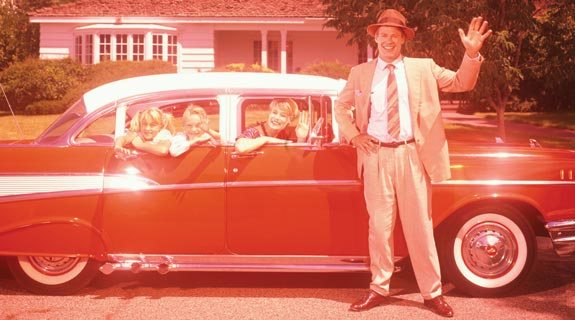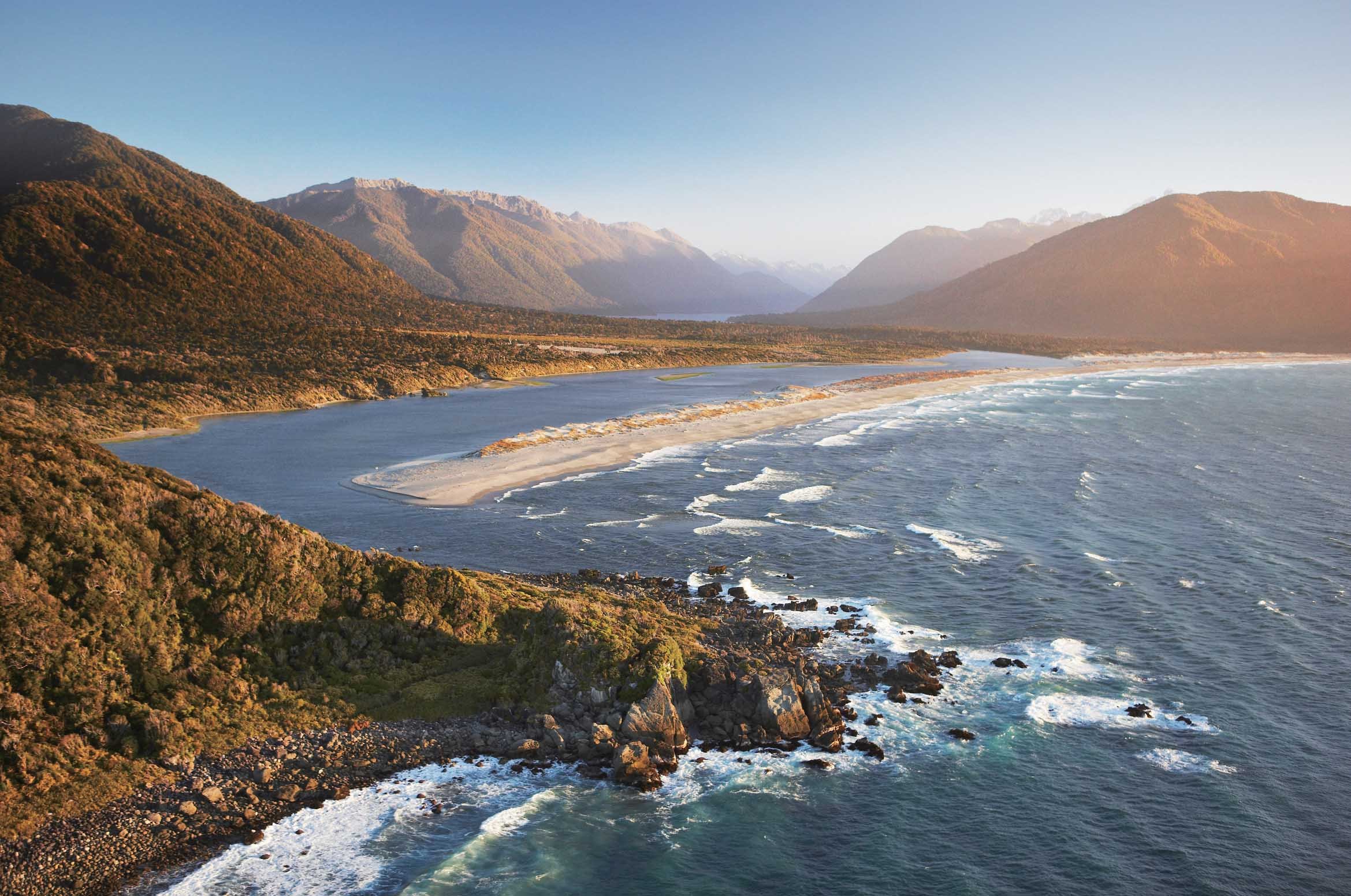Big cars for big families.
Not everyone can fit into an eco-friendly shopping cart. Vincent Heeringa looks at greener transport options for families, schools and rugby teams
Photo: Chip Simons/Getty
Try squeezing my family of six into a low-emission, fuel-efficient runabout in an attempt to be green, and you can guarantee enough family fisticuffs that we’ll come out black-and-blue instead.
There are times when we need a big car, whether we’re out on a family trip, driving the school debating squad or shuttling guests to the airport. But does a bigger vehicle always have to mean a bigger footprint?
Well, yes and no. Big means heavy, which implies more power, a larger engine, increased fuel use and more emissions. But then again, a carload of seven people potentially means five fewer vehicles on the road.It’s not easy being big and beautiful, so here are six tips for people movers who also care about the planet.
1. Don’t do it
Buses and trains will always beat a car on emissions and fuel cost. So will bikes, walking and sharing a ride. I’m not being cute. We own one large, gas-guzzling Chrysler Voyager. The beast is so thirsty that we now ask ourselves if it’s really necessary to fire up all six cylinders to go somewhere. The question frees the mind—and often the body, too.

2. An SUV is not a people mover
Yes, you can get seven people in most SUVs. You can squeeze about 150 toddlers into a Hummer too. But on all measures, including good manners, SUVs are less friendly than people movers, mostly because they carry almost a tonne of technology for fording rivers and powering over snow-clad mountains—always useful in the suburbs.
Even the most fuel-efficient seven-seat SUV emits close to 200 grams of C02 per kilometre. That said, my people mover’s shameful figures are 210 grams per kilometre (see point 5).
3. Fuel matters
While we wait for biofuel to become more widely available, diesel should be your fuel of choice. Diesel engines, especially the late models, are much more efficient, have fewer emissions, last longer and would be cheaper to run if it weren’t for our stupid road user charges.
You could convert to the clean-burning LPG, but few outlets now provide it.
Best option if you’re really serious: buy a hybrid. Yes, Toyota produces electric-petrol hybrid people movers, and has more on the way in 2010 (see review, page 93).
4. Driving matters
A well-driven Remuera tractor will outclass a badly driven small car any day. Driving efficiently is easy and makes a big difference. To bone up on driving techniques visit good.net.nz/hypermile for ten tips that can massively reduce your fuel bill.
5. Modernity matters
Now, here’s a dilemma. Modern cars are incredibly efficient. The latest monster BMW 720d (driven by big people, cabinet ministers, Paul Holmes and the like) clocks in at a miserly 7.2 litres per 100 kilometres. It can also carry five people more comfortably than an inner-city apartment.
Eco-conscious drivers will buy the best technology, which is generally the latest. But is buying a new car really better than extending the life of your existing car, and all the energy, water and resources that went into its manufacture?
There’s no easy answer. Conventional eco-thinking is that making your technology last longer is better; selling your car and buying a new one adds one more car to the world.
You can dig a little deeper than this using a method developed in the US called GREET (greenhouse gases, regulated emissions, and energy use in transportation) which calculates the energy used in the full life cycle of a car and its fuel consumption.
It’s horribly academic, but the website Salon.com did a great job of comparing a 1986 Mercedes with a new Prius. The result: driving the Merc a further 186,000 kilometres would equal the energy it takes to produce a new Prius and drive it for its lifetime (about 15 years, or 257,500km).
There are a few assumptions here: that the Merc would survive that long, that the higher CO2 emissions of the old car don’t matter and that the Merc is retired at the end of its life.
There’s an additional problem, too. If we all hung on to our old cars, wouldn’t it kill investment in clean transport, alternative fuels, improved safety and recycling? As I said, it’s horribly complicated.
6. Horses for courses
The table below shows the most fuel-efficient and low-emission people movers, according to Right Car. But are they the right cars for you? This, as with the decision to go new or hang on to your existing wreck, is a judgement call.
A super lightweight 1.9cc car may have seats for seven, but does it actually drive forwards once it’s loaded to the gunnels? Can it pull a trailer stacked with camping gear? Overtake a truck on the Desert Road? Will it last very long with all the strain on its tiny little engine? And do you like it? Informed choice is still a choice; the point is, have you informed yourself about all the eco-options?
Top five
Here are the top five new, seven-seat people movers, as measured by Right Car and Fuel Saver. SUVs have been excluded (see point 2, left), which removes potential candidates with strong credentials, such as the Toyota Noah (6.4 l/km). Nor have we counted vans. They’re a whole new subject—don’t get us started.
| Car | Specs | Fuel litres/100km | CO2 g/km |
| Volkswagen Touran | 1968cc, 103kW, diesel, 6-gear automatic | 6.7 | 175 |
| Dodge Journey | 1968cc, 103kW diesel, 6-gear automatic | 6.8 | 185 |
| Kia Carens | 1991cc, 103kW, diesel, 4-gear automatic | 7.1 | 185 |
| Citroën Picasso | 1997cc, 100kW diesel, 6-gear automatic | 7.4 | 193 |
| Renault Grand Scenic II | 1998cc, 99kW, petrol, 4-gear automatic | 8.6* | 185 |
* Lower annual cost because it is petrol powered and carries no road user charges
Source: www.rightcar.govt.nz






